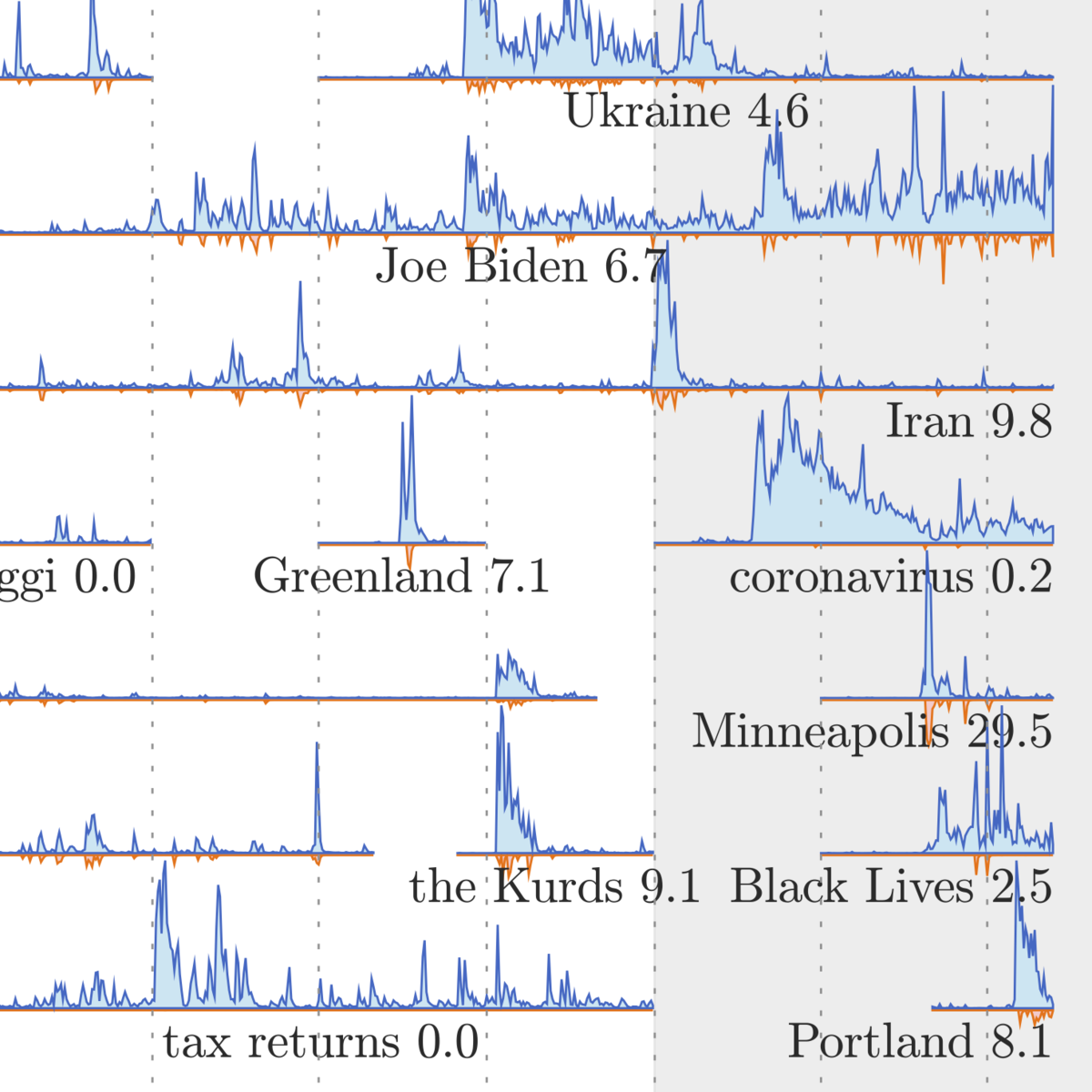Computational timeline reconstruction of the stories surrounding Trump: Story turbulence, narrative control, and collective chronopathy
P. S. Dodds, J. R. Minot, M. V. Arnold, T. Alshaabi, J. L. Adams, A. J. Reagan, and C. M. Danforth
PLOS ONE, 16, e0260592, 2021

Times cited: 18
Logline: We develop generalizeable methods that systematically and quantitatively address four main features of ambient stories unfolding in time: Computationally-aided history (what happened?), story turbulence (wHat is hAppeNinG???), narrative control (who said what?), and collective chronopathy (how time flies and drags). Using Twitter as a distributed news aggregator, we use our methods to computationally extract and analyze the stories surrounding the 45th president of the United States, Donald Trump.
Abstract:
Measuring the specific kind, temporal ordering, diversity, and turnover rate of stories surrounding any given subject is essential to developing a complete reckoning of that subject's historical impact. Here, we use Twitter as a distributed news and opinion aggregation source to identify and track the dynamics of the dominant day-scale stories around Donald Trump, the 45th President of the United States. Working with a data set comprising around 20 billion 1-grams, we first compare each day's 1-gram and 2-gram usage frequencies to those of a year before, to create day- and week-scale timelines for Trump stories for 2016 through 2020. We measure Trump's narrative control, the extent to which stories have been about Trump or put forward by Trump. We then quantify story turbulence and collective chronopathy—the rate at which a population's stories for a subject seem to change over time. We show that 2017 was the most turbulent overall year for Trump. In 2020, story generation slowed dramatically during the first two major waves of the COVID-19 pandemic, with rapid turnover returning first with the Black Lives Matter protests following George Floyd's murder and then later by events leading up to and following the 2020 US presidential election, including the storming of the US Capitol six days into 2021. Trump story turnover for 2 months during the COVID-19 pandemic was on par with that of 3 days in September 2017. Our methods may be applied to any well-discussed phenomenon, and have potential to enable the computational aspects of journalism, history, and biography.
- This is the default HTML.
- You can replace it with your own.
- Include your own code without the HTML, Head, or Body tags.
BibTeX:
@article{dodds2021d,
author = {Dodds, Peter Sheridan and Minot, Joshua R. and
Arnold, Michael V. and Alshaabi, Thayer and Adams,
Jane L. and Reagan, Andrew J. and Danforth,
Christopher M.},
title = {Computational timeline reconstruction of the stories
surrounding {T}rump: {S}tory turbulence, narrative
control, and collective chronopathy},
journal = {PLOS ONE},
year = {2021},
pages = {e0260592},
note =
{\href{https://arxiv.org/abs/2008.07301}{https://arxiv.org/abs/2008.07301}},
}